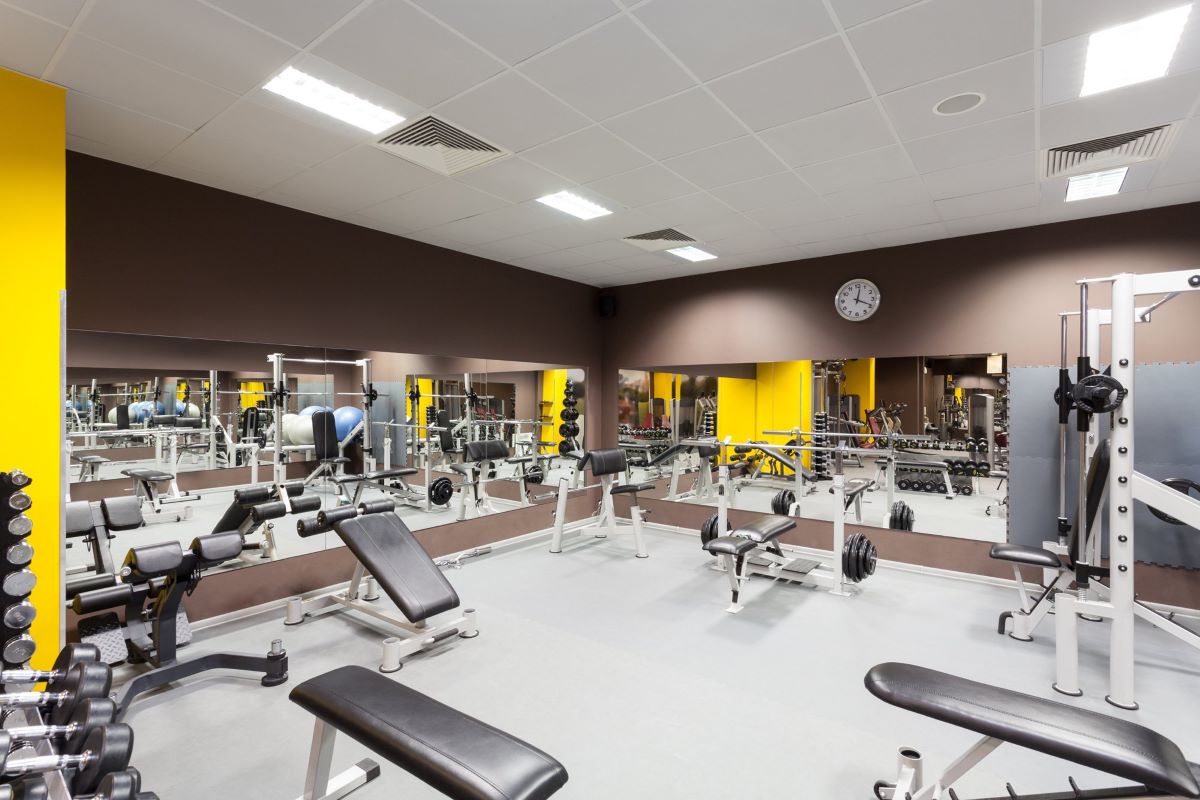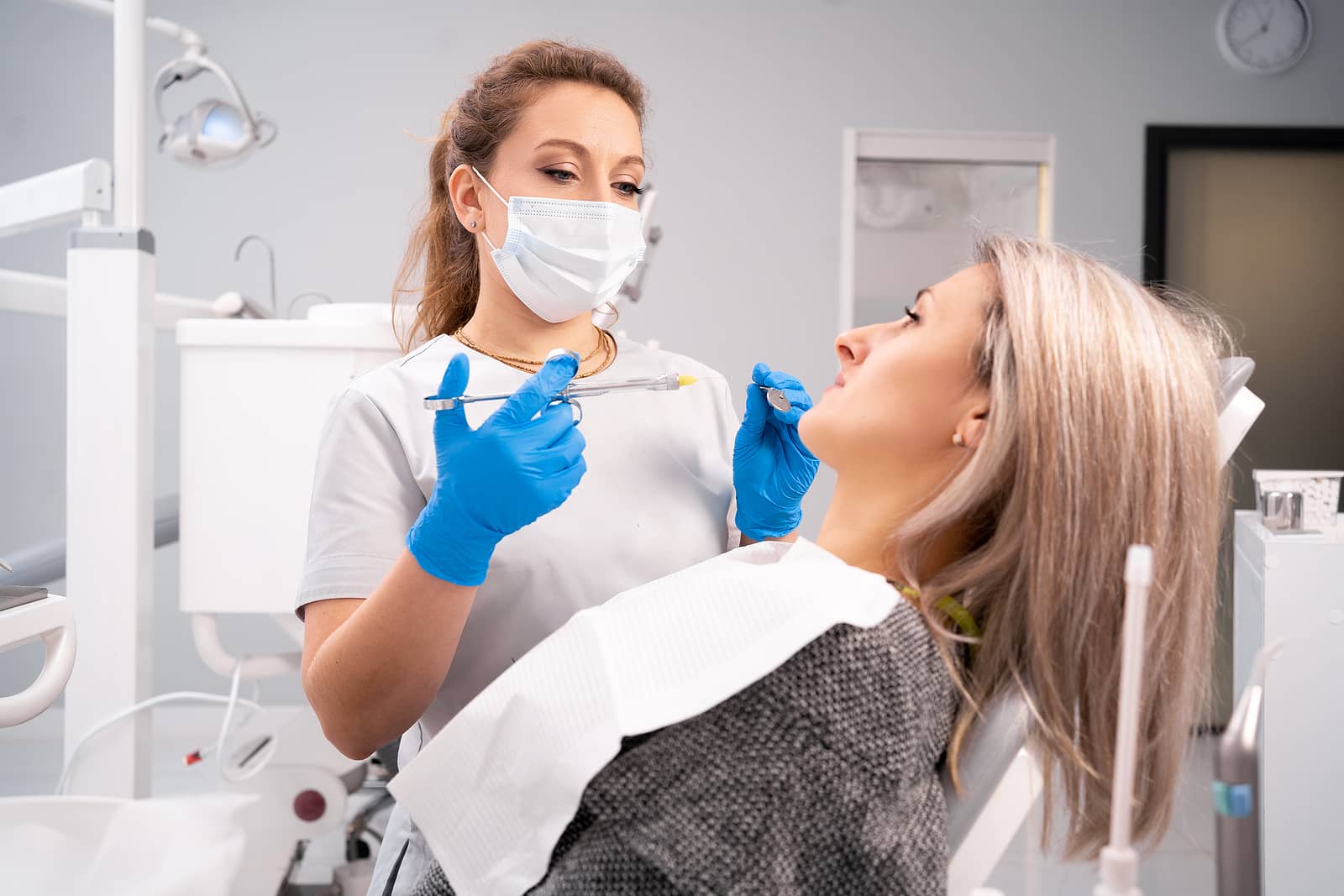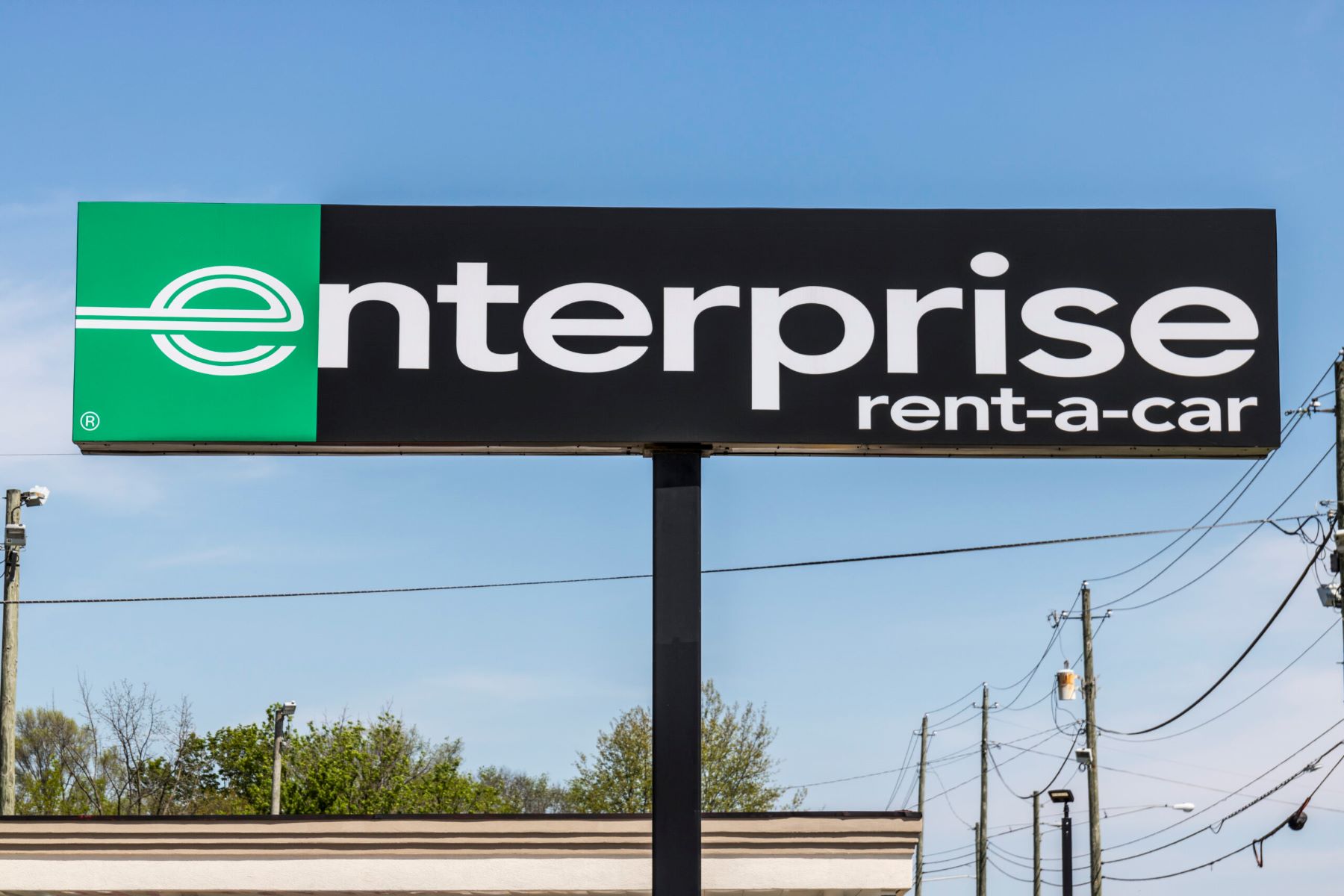

Finance
How Much Is Insurance For A Gym?
Published: November 10, 2023
Discover the cost of insuring your gym with our comprehensive finance guide. Find out how much insurance you need and get the best rates for your fitness facility today!
(Many of the links in this article redirect to a specific reviewed product. Your purchase of these products through affiliate links helps to generate commission for LiveWell, at no extra cost. Learn more)
Table of Contents
Introduction
Running a gym can be an incredibly rewarding business venture. However, like any other business, it comes with its fair share of risks. That’s why having proper insurance coverage is essential to protect your gym and its assets. But how much does insurance for a gym actually cost?
The cost of insurance for a gym can vary widely depending on various factors. Understanding these factors and their impact on insurance premiums can help you make informed decisions and find the best coverage for your gym at a competitive price.
Fitness centers and gyms face unique risks due to the nature of their operations. From premises liability to equipment damage, there are a multitude of potential risks that need to be managed and insured against. It’s crucial to have a comprehensive insurance policy that can adequately protect your gym from potential financial losses.
In this article, we’ll explore the key factors that can influence the cost of insurance for a gym. We’ll also discuss the different types of insurance coverage that gyms typically need, and provide some tips on how to get the best insurance rates for your gym.
By the end of this article, you’ll have a solid understanding of what to expect when it comes to insuring your gym, and how to navigate the insurance market to find the right coverage at the most affordable price.
Factors Affecting Gym Insurance Costs
Several factors come into play when determining the cost of insurance for a gym. Insurance companies evaluate these factors to assess the level of risk associated with insuring a gym and calculate the premiums accordingly. Let’s take a look at some of the key factors that can influence gym insurance costs:
- Size and Location of the Gym: The size and location of your gym can have a significant impact on the insurance premiums. Larger gyms with more square footage generally have higher premiums due to the increased exposure to risks. Additionally, gyms located in areas with higher crime rates or higher property values may also see higher insurance costs.
- Type of Gym: The type of gym you operate can also affect insurance costs. For example, a gym that offers high-intensity activities like boxing or martial arts may have higher premiums due to the increased risk of injuries and liability claims.
- Claims History: Insurance companies consider the claims history of a gym when determining the cost of coverage. If your gym has a history of frequent claims or high-value claims, it may result in higher premiums. On the other hand, gyms with a clean claims history may be eligible for lower insurance rates.
- Safety Measures: Insurance companies assess the safety measures implemented by a gym to mitigate risks. Proper safety protocols, well-maintained equipment, and trained staff can help lower insurance costs by reducing the likelihood of accidents and injuries.
- Coverage Limits: The amount of coverage you choose for your gym also affects the cost of insurance. Higher coverage limits typically result in higher premiums. It’s important to strike a balance between proper coverage and affordability to ensure you have adequate protection without overpaying for insurance.
These are just a few of the many factors that can impact the cost of insurance for a gym. It’s important to discuss your specific needs and circumstances with an experienced insurance agent to get an accurate quote tailored to your gym’s requirements.
Liability Insurance for Gyms
Liability insurance is one of the most crucial types of insurance coverage for gyms. It protects your gym from legal claims arising from third-party injuries or property damage that occur on your premises or as a result of your gym’s operations. Here are some key points to know about liability insurance for gyms:
Coverage: Liability insurance for gyms typically covers bodily injury, property damage, and personal injury claims. This includes incidents like slips and falls, equipment-related injuries, or damage to the property of others caused by your gym’s operations.
Premises Liability: Gyms have a responsibility to maintain a safe environment for their members and guests. If someone is injured while using your gym facilities or participating in a fitness class, they may hold your gym liable for their injuries. Liability insurance can help cover the medical expenses, legal fees, and potential settlements or judgments resulting from such claims.
Product Liability: If your gym sells or provides fitness equipment, supplement products, or any other products, product liability insurance can protect you from claims arising from the use of these products. This coverage is essential in case a member suffers an injury or adverse reaction due to a faulty or defective product.
Professional Liability: Professional liability insurance, also known as errors and omissions (E&O) insurance, is especially crucial for personal trainers, fitness instructors, and other fitness professionals. It protects against claims of negligence, professional errors, or inadequate training that result in injury or harm to clients.
Legal Defense: Liability insurance for gyms also provides coverage for legal defense costs. If your gym faces a liability claim, insurance will help cover the expenses of hiring a lawyer and other legal proceedings.
It’s important to note that liability insurance typically has policy limits, which represent the maximum amount the insurance company will pay for a claim. It’s crucial to carefully evaluate your gym’s needs and choose appropriate coverage limits to adequately protect your business from potential liabilities.
By having liability insurance in place, you can have peace of mind knowing that your gym is protected against potential legal and financial risks.
Property Insurance for Gyms
Property insurance is an essential coverage for gyms as it protects your facility and its contents from a range of risks such as fire, theft, vandalism, or natural disasters. Here are some key points to consider regarding property insurance for gyms:
Building Coverage: Property insurance for gyms typically includes coverage for the physical structure of your building. This includes the walls, roof, flooring, and other permanent fixtures. It provides financial protection in case of damages caused by events like fires, storms, or structural failures.
Contents Coverage: In addition to the building, property insurance also covers the contents inside the gym, including exercise equipment, fitness machines, weights, mats, and other inventory. This coverage ensures that you can replace or repair damaged or stolen equipment if such incidents occur.
Business Interruption: Business interruption coverage is an important aspect of property insurance for gyms. It provides coverage for lost income and other expenses if your gym becomes temporarily inoperable due to a covered event, such as a fire or a natural disaster. This coverage can help you recover financially and continue operations during the repair and rebuilding process.
Equipment Breakdown: Gyms rely heavily on various types of equipment, and any breakdown can disrupt operations. Equipment breakdown coverage helps cover the costs of repairing or replacing damaged or malfunctioning equipment. This includes exercise machines, HVAC systems, electrical equipment, and other essential systems.
Valuation: When obtaining property insurance for your gym, it’s important to accurately valuate your building and contents so that you can secure adequate coverage. Consider factors like the replacement cost of equipment, the age of the building, and any recent renovations or upgrades.
Deductibles: Property insurance policies for gyms typically have deductibles, which are the out-of-pocket expenses you must pay before the insurance coverage kicks in. Higher deductibles can help lower premiums, but it’s essential to assess your gym’s financial capabilities to determine what deductible amount is feasible.
Having comprehensive property insurance in place ensures that your gym is protected from unexpected events that could potentially result in significant financial losses. Work with an experienced insurance agent to evaluate your gym’s property insurance needs and find coverage that matches your requirements.
Workers’ Compensation Insurance for Gyms
Workers’ compensation insurance is a critical coverage for gyms that have employees. This insurance protects both your employees and your gym by providing coverage for work-related injuries or illnesses. Here are some key points to know about workers’ compensation insurance for gyms:
Mandatory Coverage: In most states, workers’ compensation insurance is legally required for businesses that have employees. It helps ensure that employees who suffer work-related injuries or illnesses receive the necessary medical treatment, lost wages, and rehabilitation services.
Medical Expenses: Workers’ compensation insurance covers the medical costs associated with treating work-related injuries or illnesses. This can include doctor visits, hospital stays, surgeries, medications, physical therapy, and other necessary medical treatments.
Lost Wages: If an employee is unable to work due to a work-related injury or illness, workers’ compensation insurance provides wage replacement benefits. This helps the employee cover a portion of their lost wages during their recovery period.
Disability Coverage: Workers’ compensation may also provide disability benefits to employees who suffer permanent disabilities or impairments as a result of a work-related incident. These benefits help compensate for the long-term impact on the employee’s earning potential.
Legal Protection: Having workers’ compensation insurance in place protects your gym from potential lawsuits related to employee injuries. In general, workers’ compensation coverage prevents employees from suing their employer for work-related injuries in exchange for the benefits provided by the insurance.
Cost Factors: The cost of workers’ compensation insurance for gyms is influenced by factors such as the number of employees, their job roles, and the gym’s claims history. The classification of your gym’s activities, such as personal training or group fitness classes, may also impact the premiums.
Employee Safety Measures: Implementing comprehensive safety programs and training protocols in your gym can help minimize the risk of work-related injuries and illnesses. Insurance companies may consider these safety measures when determining your workers’ compensation premiums.
It’s crucial to work with an experienced insurance provider to ensure that your gym has the appropriate workers’ compensation coverage. They can help you understand your legal obligations, assess your gym’s specific risks, and find a policy that meets your needs while remaining compliant with state regulations.
Business Interruption Insurance for Gyms
Business interruption insurance is a vital coverage for gyms to protect against financial losses caused by unexpected events that disrupt normal operations. This insurance provides coverage for lost income and additional expenses during a period of business interruption. Here are some key points to know about business interruption insurance for gyms:
Coverage: Business interruption insurance compensates for the income that your gym would have earned if operations had not been interrupted due to a covered event. This coverage helps you cover ongoing expenses such as rent, utilities, payroll, and loan payments, ensuring that your gym can weather the financial impact of a disruption.
Covered Events: Business interruption insurance typically applies to events like fires, natural disasters, and other unforeseen circumstances that render your gym temporarily inoperable. It’s crucial to carefully review your policy to understand the specific events that are covered and any exclusions or limitations.
Extra Expense Coverage: In addition to lost income, business interruption insurance may include coverage for extra expenses incurred to minimize the impact of the interruption. This can include costs associated with relocating or renting temporary facilities, equipment rentals, and advertising to notify customers of the temporary changes.
Waiting Period: Business interruption insurance policies often have a waiting period, which is the initial period after the interruption begins during which no coverage is provided. The waiting period is usually 24-48 hours, but it can vary depending on the policy. It’s important to consider this waiting period when selecting coverage to ensure it aligns with your gym’s needs.
Understanding the Indemnity Period: The indemnity period is the period for which the insurance company agrees to provide coverage for business interruption losses. It’s essential to assess your gym’s recovery period and select an appropriate indemnity period that allows ample time for rebuilding, repairs, and resuming normal operations.
Reviewing Coverage Limits: Business interruption insurance policies have limits based on your gym’s anticipated income and expenses. Carefully evaluate your gym’s financials and growth projections to determine the appropriate coverage limits that will adequately protect your business in the event of a disruption.
Business interruption insurance can be a crucial lifeline to help gyms recover from unexpected events that cause operational disruptions. By having this coverage in place, you can mitigate financial losses and ensure the smooth continuation of your gym’s operations in the face of adversity.
Equipment Insurance for Gyms
Equipment insurance is a critical coverage for gyms that ensures the protection of valuable fitness equipment. Gym equipment represents a significant investment, and any damage or loss can have a substantial financial impact. Here are some key points to know about equipment insurance for gyms:
Coverage: Equipment insurance covers damage or loss to your gym’s fitness equipment. This includes treadmills, weight machines, exercise bikes, free weights, and other workout equipment. It provides financial protection in case of theft, fire, vandalism, or accidental damage.
All-Risk Coverage: Equipment insurance typically offers all-risk coverage, meaning it protects against a wide range of perils. This includes not only typical risks like fire or theft but also unforeseen events such as water damage, electrical surges, and even accidental damage caused by members or employees.
Replacement Cost: Equipment insurance policies often provide coverage on a replacement cost basis. This means that in the event of a covered loss, the insurance company will reimburse you for the cost of replacing the damaged or stolen equipment with equivalent items, rather than their depreciated value.
Exceptions and Deductibles: It’s essential to review the terms and conditions of your equipment insurance policy to understand any exceptions or limitations. Some policies exclude certain types of equipment or require additional coverage for high-value items. Additionally, equipment insurance policies usually have deductibles, which are the out-of-pocket expenses you must pay before the insurance coverage applies.
Regular Maintenance and Documentation: Insurance companies may require proof of regular equipment maintenance in order to validate coverage. It’s important to keep records of routine maintenance, repairs, and servicing to demonstrate that you are taking measures to keep your equipment in good working order.
New Equipment Additions: If you add new equipment to your gym, notify your insurance provider so that the coverage can be updated accordingly. Failure to update your equipment inventory can result in inadequate coverage for new additions.
Risk Management: Implementing proper risk management practices can help minimize the likelihood of equipment damage or loss. This includes implementing security measures such as surveillance systems and access controls, as well as training staff and members on proper equipment usage and care.
By having comprehensive equipment insurance in place, you can protect your gym from the financial burden of repairing or replacing damaged or stolen equipment. Work with an experienced insurance provider to assess your equipment insurance needs and ensure that you have adequate coverage to safeguard your gym’s assets.
How to Get the Best Insurance Rates for Your Gym
Securing the best insurance rates for your gym is crucial for managing costs and ensuring that you have adequate coverage. Here are some tips to help you obtain the best insurance rates:
Shop Around and Compare Quotes: Don’t settle for the first insurance provider you come across. Shop around and obtain quotes from multiple insurers. This allows you to compare coverage options and premiums to find the best deal for your gym.
Work with an Insurance Specialist: Seek out insurance companies or brokers that specialize in providing coverage for gyms and fitness centers. These specialists have a deep understanding of the unique risks faced by the industry and can offer tailored coverage options and competitive rates.
Bundle Policies: Consider bundling multiple insurance policies, such as general liability, property, workers’ compensation, and equipment insurance, with the same provider. Insurers often offer discounts for bundling, which can result in significant savings on premiums.
Implement Risk Management Strategies: Insurance companies appreciate businesses that take risk management seriously. Implement safety protocols, ensure proper training for staff and members, and conduct regular equipment maintenance to reduce the likelihood of accidents and claims. This demonstrates to insurers that you prioritize risk mitigation, potentially resulting in lower insurance rates.
Review and Update Coverage Regularly: As your gym grows and evolves, your insurance needs may change. Regularly review your coverage with your insurance provider to ensure that it still aligns with your gym’s operations and requirements. Adjust coverage limits, add or remove coverage as necessary, and make any updates to keep your policy up to date.
Maintain a Good Claims History: A clean claims history can have a positive impact on insurance rates. Insurance companies consider your gym’s claims history when determining premiums. By implementing safety measures and actively managing risks, you can minimize incidents and maintain a favorable claims record.
Consider Deductibles: Higher deductibles can lead to lower insurance premiums. Evaluate your gym’s financial capabilities and determine the appropriate deductibles that strike a balance between affordability and coverage.
Work with an Insurance Agent: Seek professional advice from an experienced insurance agent who can guide you through the insurance process and help you navigate the complexities of insurance coverage. They can provide valuable insights and advice to ensure you get the best rates and coverage for your gym.
By following these strategies and working with insurance experts, you can increase your chances of securing the best insurance rates for your gym and safeguarding your business against potential risks.
Conclusion
Insurance is a crucial aspect of running a successful and financially protected gym. With the right insurance coverage in place, you can mitigate potential risks, protect your assets, and ensure the long-term viability of your business. Understanding the factors that influence gym insurance costs, such as size, location, claims history, and safety measures, allows you to make informed decisions and find coverage that meets your specific needs at a competitive price.
Liability insurance helps safeguard your gym against third-party injury or property damage claims, providing financial protection and peace of mind. Property insurance protects your gym’s physical structure and contents from a range of risks, while business interruption insurance helps cover lost income and additional expenses in the event of operational disruptions. Equipment insurance is essential for protecting your valuable fitness equipment from damage, theft, or loss. Lastly, workers’ compensation insurance provides coverage for work-related injuries or illnesses for your employees, ensuring their well-being and preventing potential legal challenges.
To obtain the best insurance rates for your gym, it’s important to shop around, work with insurance specialists, bundle policies, implement risk management strategies, and regularly review and update your coverage. By following these steps and working closely with insurance professionals, you can secure comprehensive coverage at affordable rates while effectively managing your insurance costs.
Remember that insurance is not a one-time consideration, but an ongoing process. As your gym evolves, regularly evaluate your insurance needs and work with your insurance provider to ensure that your coverage remains suited to your changing requirements.
Running a gym comes with inherent risks, but with the right insurance coverage and risk management measures in place, you can protect your business and focus on providing a safe and enjoyable experience for your members. Invest in reliable insurance coverage, seek expert advice, and take proactive steps to mitigate risks – it’s a smart investment that will give you peace of mind and allow your gym to thrive in the long run.














